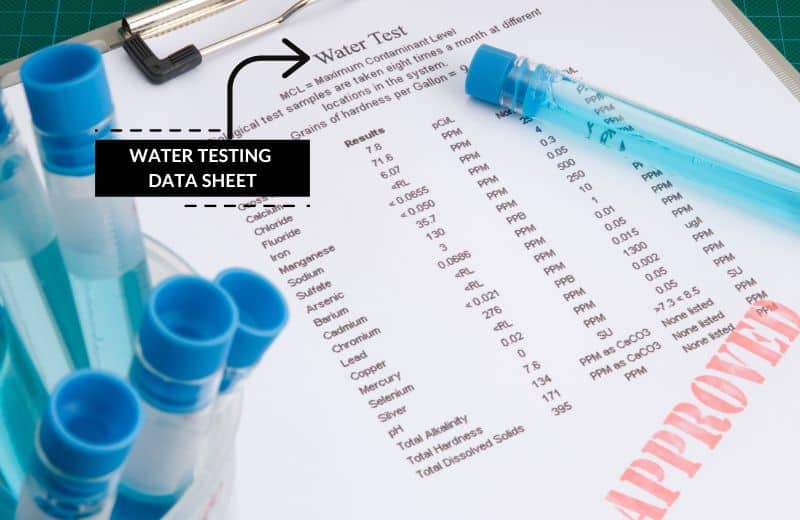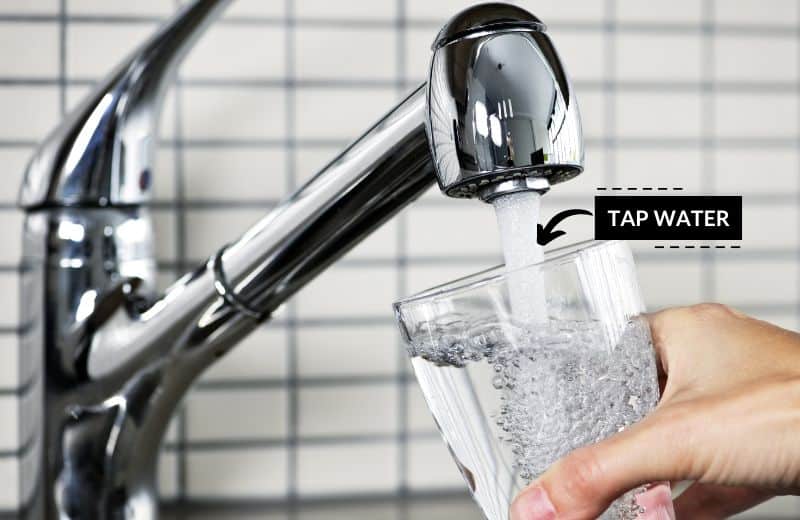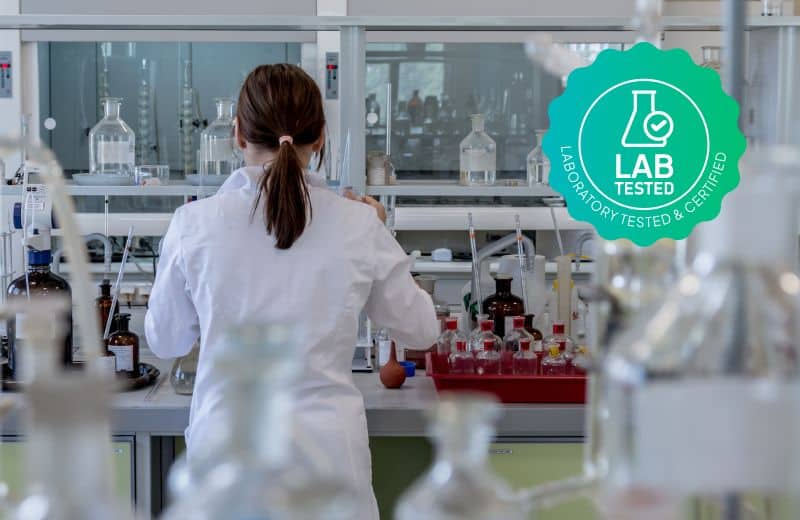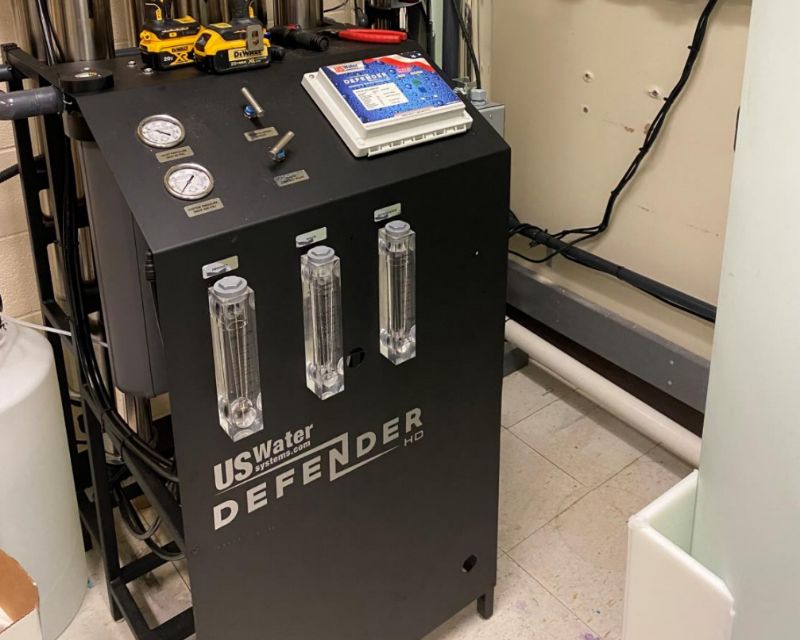Benzo(a)pyrene is a hydrocarbon that’s moderately persistent in the environment and has been detected in some natural water supplies, including groundwater.
In this guide, you’ll find all the information you need to know about this lesser-known contaminant, including what it is, how it gets into water, and its potential health effects.
📌 Key Takeaways:
- Benzo(a)pyrene is a drinking water contaminant that’s found in coal tar, crude oil, tobacco, and certain food products.
- This polycyclic aromatic hydrocarbon primarily gets into water as a result of contamination from water pipes with a coal tar lining. Coal tar and crude oil pollution may also cause benzo(a)pyrene to contaminate groundwater and surface water sources.
- Benzo(a)pyrene doesn’t have a distinct taste, color, or odor in low levels in drinking water.
Table of Contents
- ❔ What Is Benzo(a)pyrene In Water?
- 🚰 How Does Benzo(a)pyrene Get Into Water?
- 🔎 How To Know If Your Water Contains Benzo(a)pyrene
- 🚱 Is Benzo(a)pyrene In Drinking Water Dangerous?
- 📉 Is Benzo(a)pyrene In Tap Water Regulated?
- 🧪 How To Test For Benzo(a)pyrene In Tap Water
- 👩🏽⚕️ What To Do If You’re Concerned About Benzo(a)pyrene In Your Water
- ⚠️ Other Ways You Might Be Exposed To Benzo(a)pyrene
- 📑 Final Word: Removing Benzo(a)pyrene From Water
❔ What Is Benzo(a)pyrene In Water?
Benzo(a)pyrene (BaP for short) is a hydrocarbon consisting of five fused benzene rings that’s sometimes found in groundwater and surface water supplies. It’s considered one of the most toxic and well-known polycyclic aromatic hydrocarbons (PAHs).
The most likely source of benzo(a)pyrene in the environment is incomplete combustion of organic matter, as well as emissions from natural sources, like volcanic eruptions and forest fires.
Several human activities, like fossil fuel combustion and wood burning, also cause benzo(a)pyrene to pollute the air.
Bap is found in coal tar and has the formula C20H12.

🚰 How Does Benzo(a)pyrene Get Into Water?
Benzo(a)pyrene is formed during the incomplete combustion of organic matter and enters the environment due to natural emissions and human activities.
In municipal water supplies, the most common cause of benzo(a)pyrene is due to leaching from asphalt and coal tar linings in distribution pipes and water storage tanks.
The contaminant may also pollute natural bodies of water through urban runoff, dry and wet deposition, petroleum leaks, wastewater and atmospheric deposition from industrial activity, and the burning of fossil fuels.
When BaP is found in raw water, it typically absorbs the water’s particulate matter. It can be removed by filtration, but the problem is that in a public drinking water supply, PaH may re-enter the water as it travels along pipes that are made from coal tar.
🔎 How To Know If Your Water Contains Benzo(a)pyrene
Here are some of the methods you can use to find out whether or not your water contains benzo(a)pyrene.
Check Your Water Quality Report
If you get your water from a municipal supplier, you can check your annual Water Quality Report to see if your water utility has detected concentrations of benzo(a)pyrene in the treated drinking water.
However, as we mentioned earlier, one of the most common causes of BaP contamination in drinking water is from pipes containing coal tar, so even if water tested at the treatment plant contains no BaP, it might become contaminated as it travels to your home.
💡 You can find your most recent Water Quality Report online. Just search for your local authority followed by ‘Water Quality Report’ or ‘Consumer Confidence Report’.

Test Your Water
If you’re concerned about BaP entering your water as it travels through the distribution system, you can test the water that leaves your faucets at home for this contaminant.
Testing your own water is the most accurate method of determining your water’s benzo(a)pyrene concentration.
We’ve shared more on how to test your water for BaP later in this guide.
🚱 Is Benzo(a)pyrene In Drinking Water Dangerous?
Benzo(a)pyrene is considered a dangerous drinking water contaminant because it has several known human health effects, including DNA mutations and cancer, according to this 2022 report.
BaP has also been found to promote the multiplication of viruses, and might impair fertilization and metabolism, and cause neurotoxicity.
The biggest risk of BaP in drinking water is due to its carcinogenic status. Exposure to any concentration of this contaminant is thought to increase your cancer risk.

📉 Is Benzo(a)pyrene In Tap Water Regulated?
The Environmental Protection Agency has established a Maximum Contaminant Level of 0.2 PPB (parts per billion) for BaP in drinking water supplies. Water treatment plants must reduce BaP levels to below this MCL in order to protect human health.
The EPA also has a Maximum Contaminant Level Goal of 0 for BaP. That means any more than 0 BaP in water is likely to have health effects – but water utilities only need to reduce this contaminant down to the legal limit of 0.2 PPB.
The reason why the MCL is slightly higher is that this is the lowest level to which the EPA believes water utilities can reasonably reduce BaP in water.
Some organizations believe that the EPA’s legal limit is too lenient given the potential health effects of BaP. For instance, the Environmental Working Group has a much lower recommended Health Guideline of 0.007 PPB for this contaminant.
🧪 How To Test For Benzo(a)pyrene In Tap Water
Benzo(a)pyrene isn’t as common as the likes of lead and chlorine in water, so most DIY test kits don’t detect this contaminant.
There are a few laboratory tests that you can buy that detect BaP.
To test for BaP with a laboratory test, follow these steps:
- Order your preferred test online and wait for it to arrive in the post.
- Follow the test instructions to take samples of your water and send them back to the laboratory.
- Wait 1-2 weeks to receive your results via email.
We recommend testing your water for BaP if you have a specific reason to be concerned about this contaminant, such as if your local distribution system uses pipes lined with coal tar.

👩🏽⚕️ What To Do If You’re Concerned About Benzo(a)pyrene In Your Water
If you’re concerned that your water is contaminated with BaP, there are a few things you can do:
- If you get your water from a municipal supplier, reach out to your water utility to discuss your concerns. Many water utilities with distribution systems containing BaP are already taking action to tackle this contaminant by conducting pipe repairs, flushing their pipes, and replacing old cast-iron pipes with new ones.
- If you have a private well and you believe your local groundwater or surface waters are contaminated by organic pollutants like BaP, test your water with a laboratory test, then install a suitable treatment system if necessary.
- If you believe you have been exposed to dangerous levels of BaP from your water or any other source, book an appointment with your doctor as soon as possible.
- Make sure you’re aware of the other ways you might be exposed to benzo(a)pyrene (listed below).

⚠️ Other Ways You Might Be Exposed To Benzo(a)pyrene
Aside from drinking benzo(a)pyrene in your water, you might also be exposed to this contaminant from the following sources:
- In the atmosphere – BaP is primarily found in the exhaust fumes from diesel and gasoline vehicles. It also enters the atmosphere from soot smoke (such as from residential wood burners).
- In cigarette smoke – People who smoke cigarettes are at a higher risk of the health effects of BaP due to the toxic cigarette fumes.
- In certain foods – Ingesting foods cooked withliquid smoke, charcoal-broiled foods, and fruits, vegetables, cereal, flour, bread, and meats grown or reared on contaminated sites all increase your BaP exposure in food sources.
- In contaminated soils – Coming into contact with contaminated soils near waste sites is another possible cause of BaP exposure.
- Certain occupations – If you work in asphalt and coal tar production plants, smokehouses, or facilities that burn local trash, you may inhale BaP in the air.
Human exposure to BaP is considered common. So, don’t just focus on avoiding exposure in drinking water supplies – also consider your other sources of BaP and PAH exposure and reduce this however possible.
📑 Final Word: Removing Benzo(a)pyrene From Water
BaP is common in the environment and in drinking water distribution pipes. While it has no aesthetic effects and doesn’t usually alter water’s taste or appearance, the presence of this contaminant can significantly hinder drinking water quality.
Conventional treatment processes can remove between 20 and 100% of BaP and other polycyclic aromatic hydrocarbons (PAHs), depending on the concentration levels in the water source, the water’s general physical and chemical properties, and the effectiveness of the process used.
Some of the common water treatment processes for reducing BaP are granular activated carbon filtration, reverse osmosis, ultrafiltration, microfiltration, and nanofiltration.
